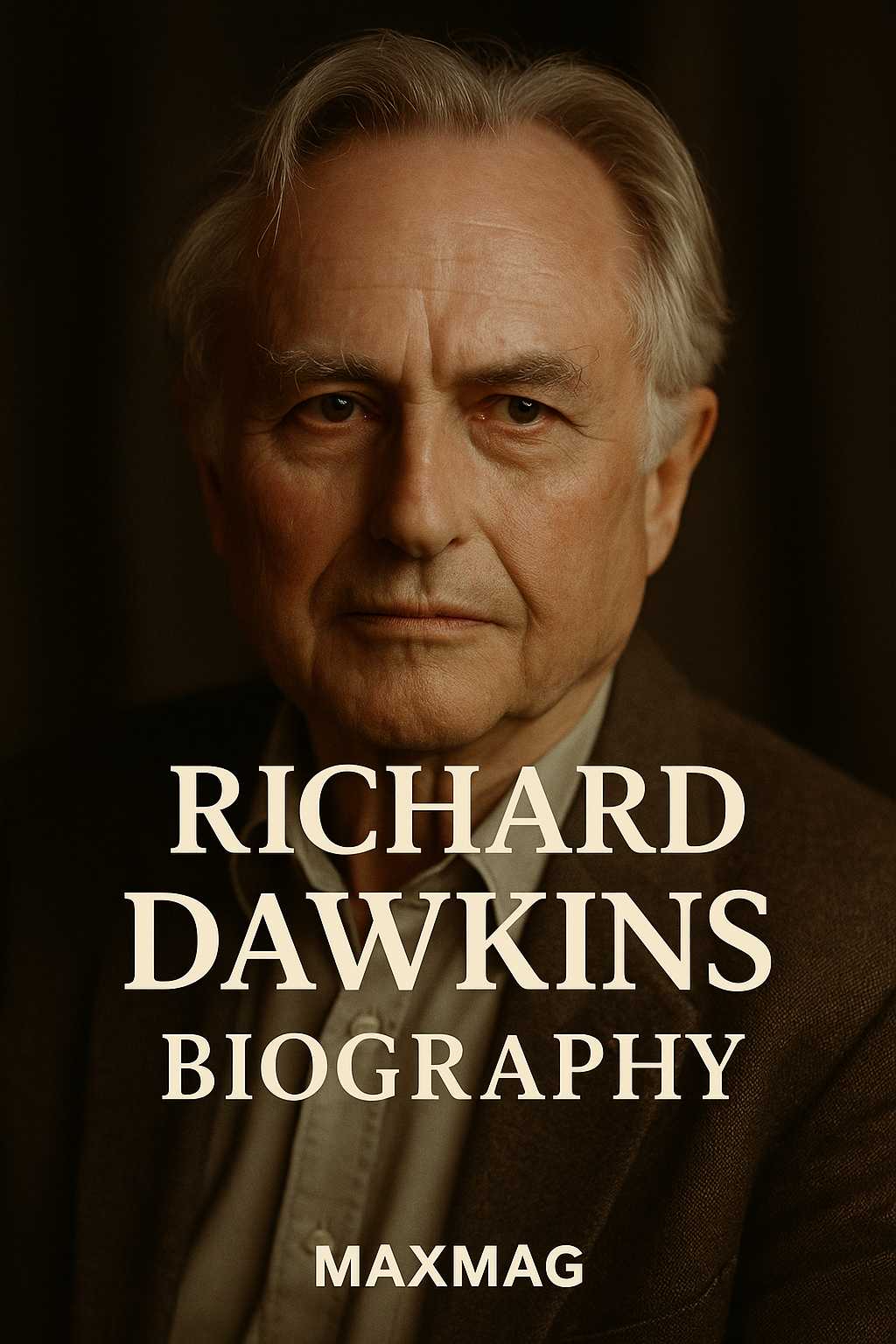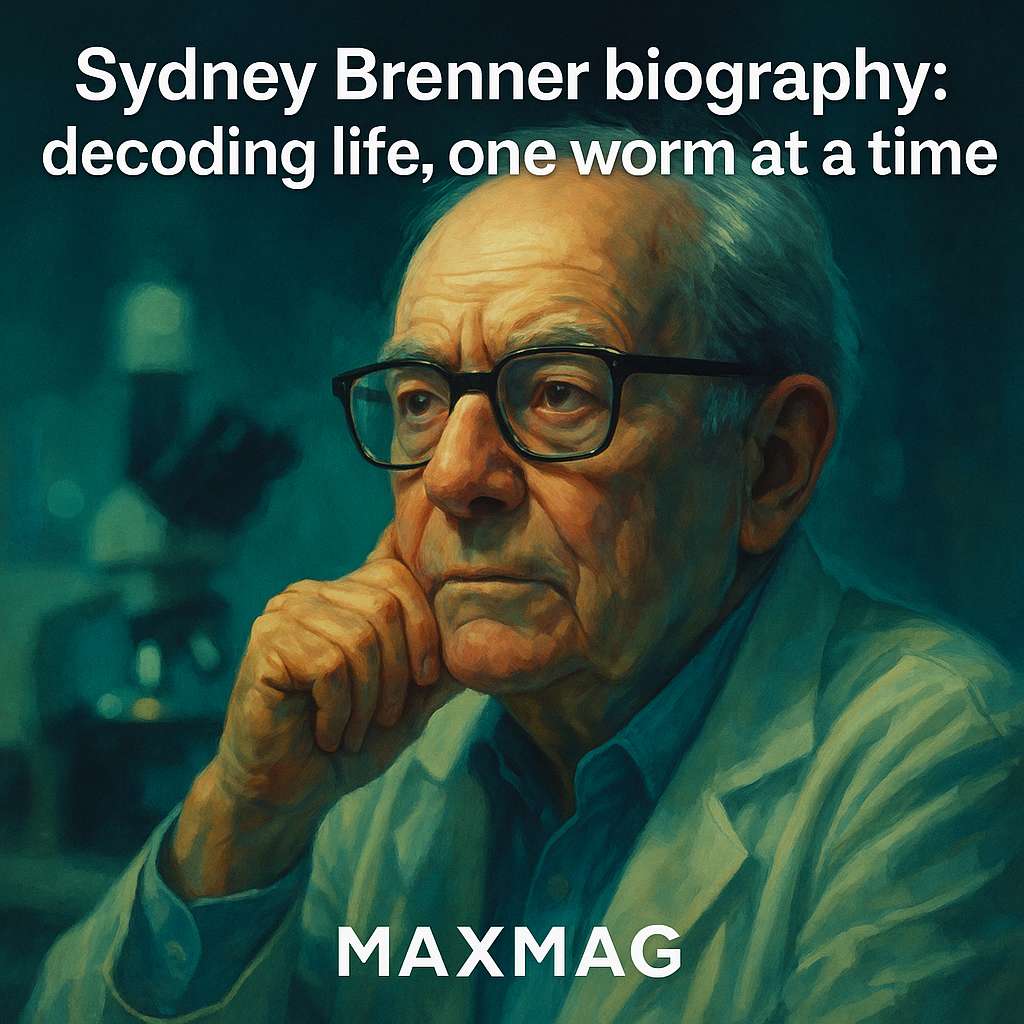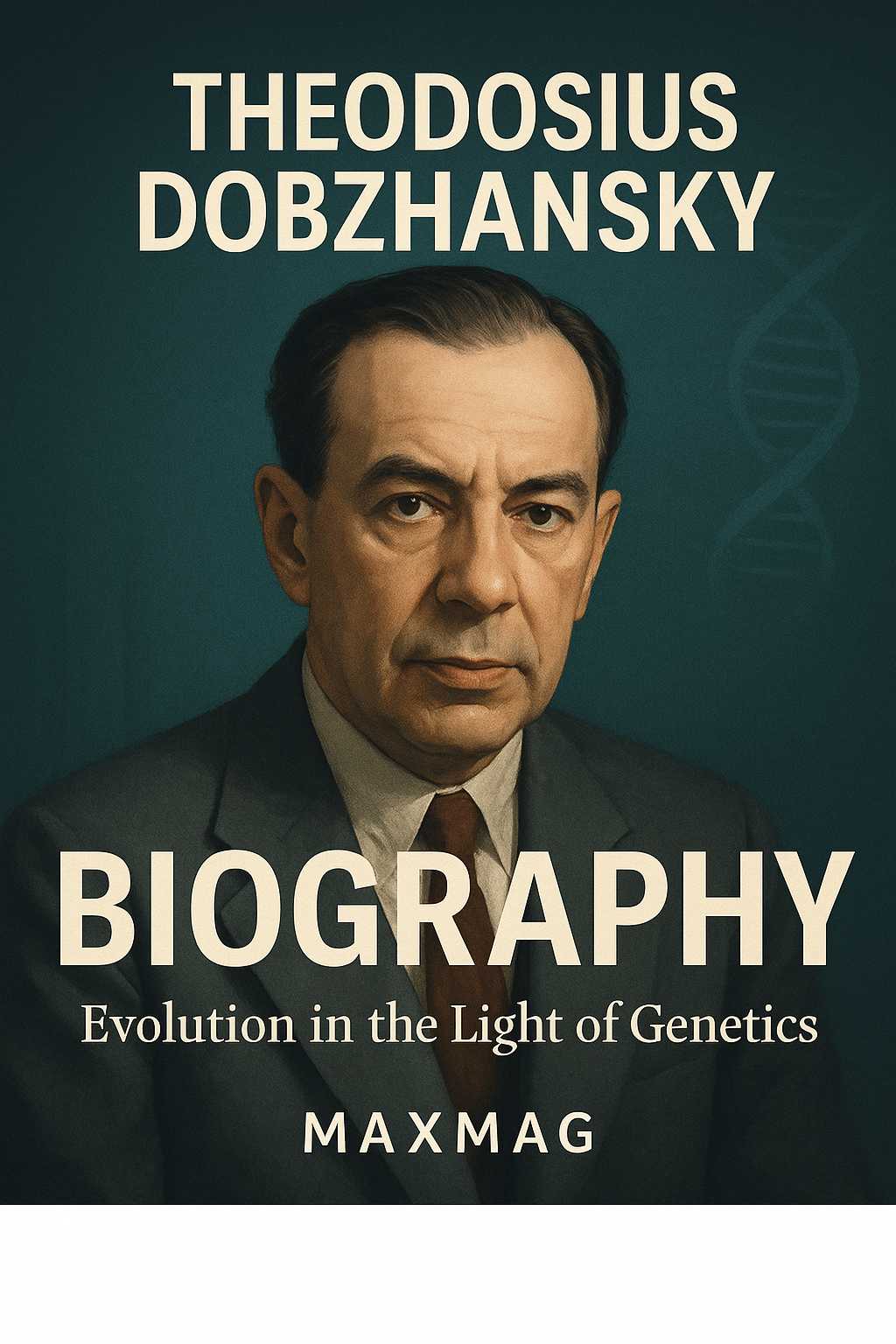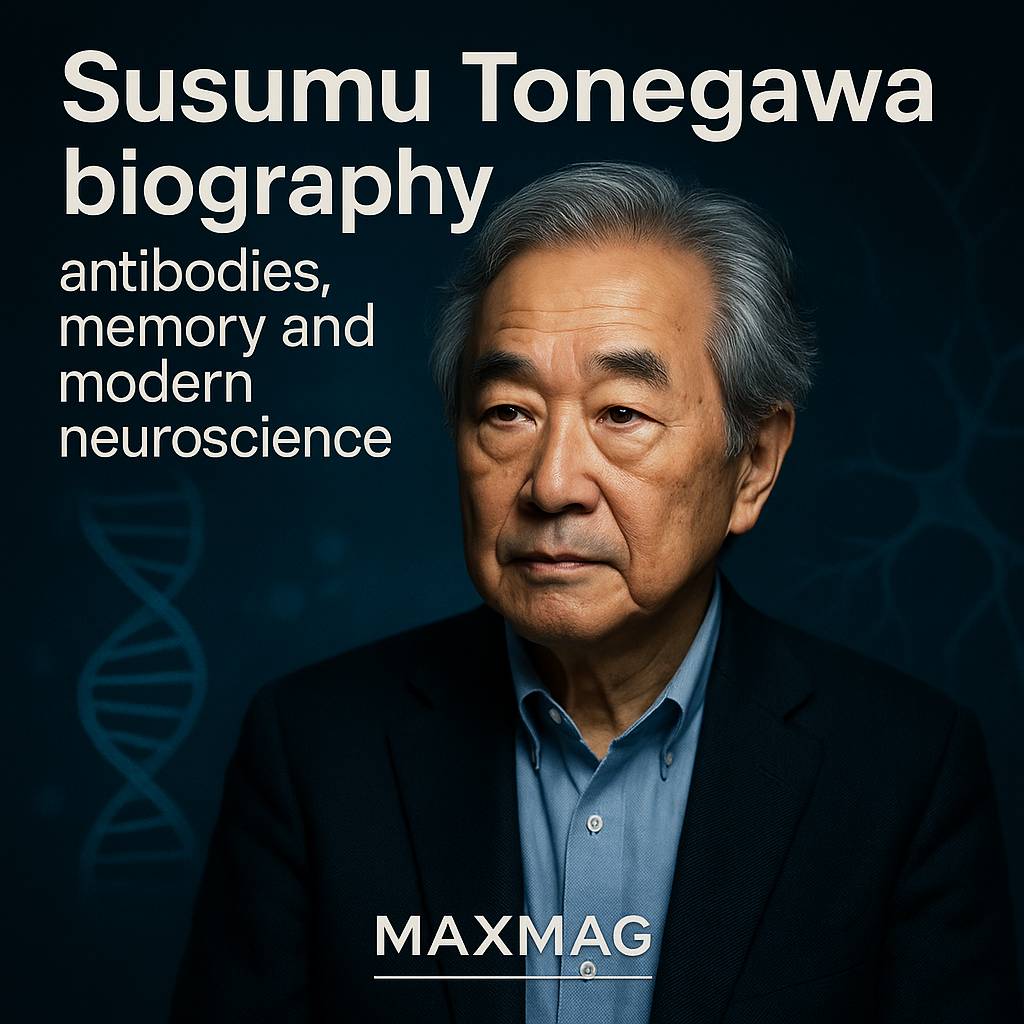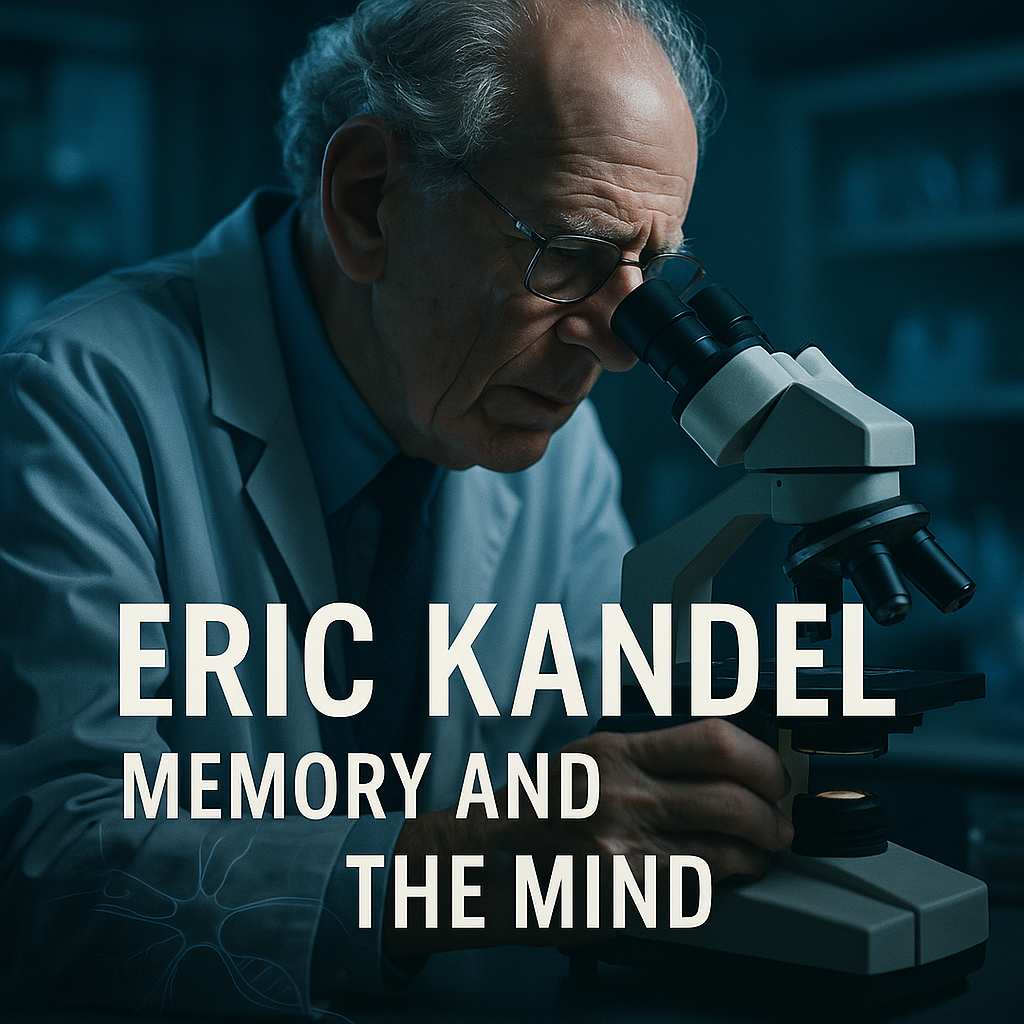
On a quiet New York afternoon, long after the flashbulbs of Stockholm faded, Eric Kandel could still be found in his Columbia University office, talking with the same animated urgency about sea slugs, synapses and the fears of a nine-year-old boy in Vienna. The Eric Kandel biography is, at its heart, a story about how a child forced to flee Nazi antisemitism grew into a neuroscience pioneer who turned the mystery of memory into a laboratory question – and then answered it with extraordinary patience and elegance.
For readers encountering him for the first time, this Eric Kandel biography offers two intertwined narratives: the life of a Holocaust survivor scientist who never forgot what he had seen in 1938 Vienna, and the rise of a new science of mind that traced our memories down to molecules. It is a tale of exile and belonging, of simple sea creatures and complex human emotions, and of one man’s stubborn belief that understanding memory at the level of cells could illuminate some of the deepest questions about who we are.
Eric Kandel at a glance
- Who: Eric Richard Kandel, Austrian-born American psychiatrist and neuroscientist, Nobel laureate in Physiology or Medicine (2000).
- Field and era: 20th and 21st century learning and memory research, bridging psychiatry, psychoanalysis and molecular neuroscience.
- Headline contributions: Demonstrated how learning alters the strength and number of synaptic connections, notably through Aplysia experiments and hippocampal studies, helping define modern synaptic plasticity theory.
- Why he matters today: His work underpins how we understand memory, learning, mental illness and even how psychotherapy might literally reshape the brain.
Early Life and Education of Eric Kandel
Vienna childhood in the shadow of Nazism
Eric Kandel was born in Vienna in November 1929, the second son of a Jewish family that ran a modest toy shop in the city. His early memories, which would later haunt and motivate him, are of a comfortable, assimilated household suddenly plunged into danger after the 1938 Anschluss, when Hitler’s troops marched into Austria to cheering crowds. Almost overnight, the boy who loved football and school became an outsider. Classmates stopped speaking to him; teachers turned their gaze away as antisemitic abuse spilled into the playground. These scenes would stay with the future neuroscientist as sharp, intrusive images—an early lesson in how trauma can tattoo itself onto the mind.
In May 1939, Eric and his older brother boarded a ship in Antwerp, leaving their parents temporarily behind and heading for an uncertain future in Brooklyn. The toy shop was lost to Aryanization, the state-sanctioned theft of Jewish property. The Eric Kandel biography begins, then, not in a laboratory but on a gangplank, with a nine-year-old learning that memory can be both a refuge and a burden. His later insistence that memory is “the glue that binds our mental life together” was not just a metaphor; it was a lived conviction.
From Brooklyn classrooms to Harvard halls
In New York, Kandel entered the Yeshiva of Flatbush, throwing himself into Hebrew studies and American life with the zeal of a child determined to belong. He learned English, Hebrew and the cadence of Brooklyn streets all at once. After moving on to Erasmus Hall High School—then a famously rigorous public school—he emerged as a strong student with a taste for history and ideas.
At Harvard College he chose to study European history rather than biology. His undergraduate thesis examined how three German writers responded to National Socialism, a topic that allowed him to wrestle intellectually with the forces that had expelled his family from Vienna. The young student was already, in a sense, writing an early chapter of the Eric Kandel legacy: using scholarship to understand how political catastrophe imprints itself on memory and identity. Neuroscience was not yet on the horizon; the mind would first be approached through literature, philosophy and the history of ideas.
Eric Kandel biography and the Birth of His Big Ideas
Discovering Freud and the lure of the unconscious
Harvard in the late 1940s was steeped in debates about Freud, psychoanalysis and the unconscious. Kandel fell in with a circle of fellow students who discussed Viennese culture and Jewish identity; through them he encountered the work of Sigmund Freud and the idea that hidden mental processes could drive behaviour. The notion that unconscious memories might shape a person’s life resonated powerfully with his own experience as a Holocaust survivor scientist trying to make sense of what he had seen as a child.
Around this time he met Anna Kris, daughter of Austrian psychoanalyst Ernst Kris, part of Freud’s circle. Their conversations nudged Kandel toward psychiatry, then dominated by psychoanalytic theory. If history could explain societies, perhaps psychiatry could explain individual suffering. The question that would define the Eric Kandel biography began to surface: could one connect the subjective world of memory and emotion with the objective machinery of the brain?
How the Eric Kandel biography of memory research really begins
To follow that question, Kandel enrolled at New York University School of Medicine in 1952. He arrived intending to become a psychoanalyst, but in his clinical rotations he grew dissatisfied with theories that lacked a biological grounding. The turning point came when he entered the Columbia University laboratory of neurophysiologist Harry Grundfest. There, oscilloscopes hummed and action potentials flickered across screens as Grundfest and colleagues examined the basic properties of nerve cells.
Watching electrical signals dance along axons, Kandel realised that the “talking cure” of psychoanalysis ultimately depended on these microscopic events. If psychoanalysis described the theatre of the mind, neuroscience revealed the backstage machinery. The Eric Kandel biography transitions here from history and psychiatry into full-blooded biology. He began to ask a deceptively simple question: when we learn something new—an association, a fear, a pleasant memory—what, exactly, changes in the brain?
His residency in psychiatry at Harvard strengthened his resolve. Patients with depression, schizophrenia and trauma carried storms of experience inside them; their distress could not be fully understood without tracing how neurons encoded these experiences. Kandel concluded that a true neuroscience pioneer would have to unite psychoanalytic insights about unconscious processes with a rigorous, experimental study of neurons and synapses.
Key Works and Major Contributions of Eric Kandel
Sea slugs and the secret life of synapses
The problem with studying human memory directly is that the brain is overwhelmingly complex. In the early 1960s, Kandel made what colleagues considered a risky move for someone with his psychiatric training: he switched to studying a humble marine mollusc, the sea slug Aplysia californica. Its nervous system had only about 20,000 neurons, many of them large and accessible, perfect for investigating the molecular basis of memory.
Working first at New York University and later at Columbia, Kandel and his collaborators focused on a simple defensive reaction: the gill-withdrawal reflex. When the slug’s siphon is touched, it reflexively withdraws its gill. With repeated harmless touches, the animal “habituates” and the response weakens; with a painful shock, it “sensitises” and the response strengthens. These behavioural changes, they showed, were mirrored by changes at the synapses—the contact points—between sensory and motor neurons. In sensitisation, more neurotransmitter was released; in habituation, less.
In painstaking experiments, the Kandel lab identified key molecular players: the messenger molecule cAMP, the enzyme protein kinase A, and transcription factors like CREB that help switch genes on or off. These studies revealed that short-term memory could be explained by functional changes in existing synapses, while long-term memory required new protein synthesis and the growth of additional synaptic connections. In other words, experience literally rewired the brain. Synaptic plasticity theory, once a bold hypothesis, was now backed by hard data from Aplysia experiments.
For non-specialists, an analogy helps. Imagine a city’s public transport system. Short-term memory is like changing the frequency of buses on an existing route; long-term memory is like building entirely new lines and stations. Kandel showed that learning does both: it temporarily boosts traffic along certain synaptic “routes,” and, when important enough, prompts the brain to lay down new “tracks” altogether.
From the sea slug to the hippocampus
Critics initially wondered whether insights from a sea slug could tell us anything about the human brain. Kandel’s answer was to push the work into mammalian systems. Collaborating with other scientists, he helped apply similar molecular logic to the vertebrate hippocampus, a region critical for forming new declarative memories. They found that long-term potentiation in hippocampal circuits also depended on cascades of molecules like cAMP and protein kinases, reinforcing the idea that learning and memory share conserved mechanisms across species.
By the time he received the Nobel Prize in Physiology or Medicine in 2000, shared with Arvid Carlsson and Paul Greengard, Kandel had become synonymous with the molecular biology of memory. His work did not merely add details to existing theories; it changed the scale at which scientists thought about mind, linking the “soft” concepts of learning and remembrance to the “hard” language of genes, ion channels and second messengers.
Beyond the lab, Kandel co-authored the monumental textbook Principles of Neural Science, which generations of students have lugged around campuses as a rite of passage. The book helped codify the history of neuroscience and the emerging consensus that understanding the brain requires integrating behaviour, systems, cells and molecules.
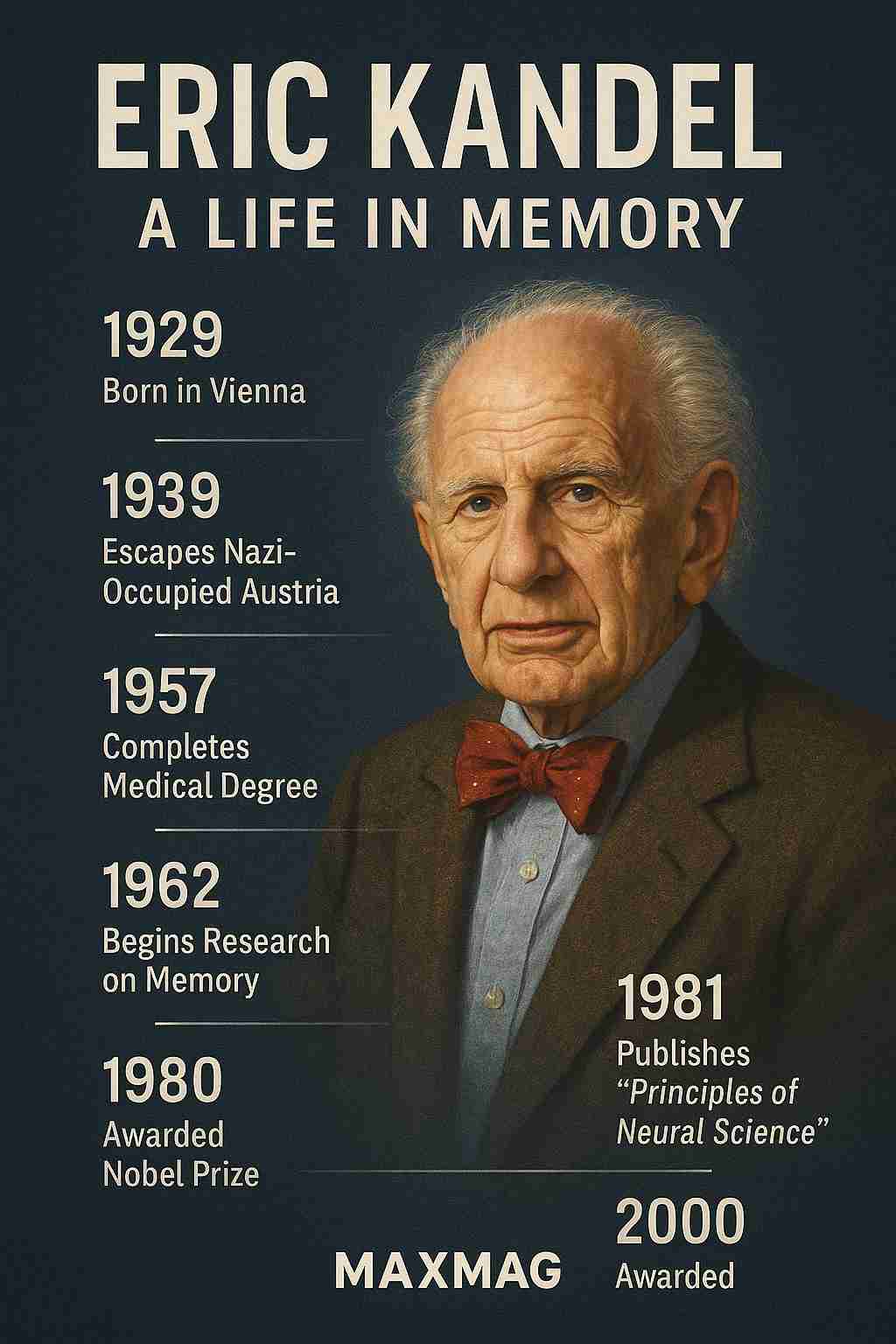
Methods, Collaborations and Working Style
Building a culture of curiosity and rigor
Former students describe Kandel’s laboratory as a place where high standards met genuine warmth. He was both a demanding mentor and an endlessly enthusiastic colleague, quick to pull a diagram onto a blackboard or to draw an unexpected analogy between a signalling pathway and a line in Freud. The Kandel lab became a training ground for a who’s who of modern neuroscience: James Schwartz, Tom Carew, Kelsey Martin, and many others who would go on to lead their own influential groups.
The daily work could be grinding—recording tiny changes in membrane potential for hours—but Kandel insisted on thinking big. Every experiment, he reminded his team, was ultimately about how the brain encodes experience. He encouraged open debate, welcomed criticism of his ideas, and was known to wander into colleagues’ offices to share a new thought about memory or to talk through the latest behavioural results in mice.
Where psychiatry meets molecular neuroscience
An important thread running through the Eric Kandel biography is his refusal to abandon psychiatry even as he embraced molecular biology. At Columbia, he helped anchor a Department of Neuroscience within the Department of Psychiatry, insisting that serious mental illnesses had to be understood across multiple levels—from genes and synapses to circuits and subjective experience.
This integrative stance informed not only his research but also his leadership at Columbia’s Mortimer B. Zuckerman Mind Brain Behavior Institute, where he served as founding co-director. A detailed profile from Columbia’s Zuckerman Institute recounts how he spoke of neuroscience as a source of “joy,” even late in his career, and how he believed that advances in the biology of mind could lead to a new humanism that merged science and the humanities.
In this sense, the Eric Kandel legacy goes beyond any single pathway or protein. It includes a way of doing science: rigorous yet imaginative, committed to both the lab bench and the therapist’s couch, comfortable invoking Proust and Hebb in the same conversation.
Controversies, Criticism and Misconceptions
Is everything really “just” synapses?
No major figure in modern science escapes criticism, and Kandel is no exception. One recurring debate concerns reductionism. Some critics argue that by focusing so strongly on synaptic plasticity and the molecular basis of memory, Kandel risks implying that complex psychological phenomena—love, grief, creativity—can be “explained away” by biochemical cascades. Others worry that the emphasis on neurons obscures the roles of glia, hormones, social context and culture.
Kandel has responded, in his writings and lectures, that understanding mechanisms does not diminish meaning. If anything, it enriches it. Knowing how a poem is printed does not make it less moving; in his view, knowing how synaptic strengths encode a painful memory does not erase the moral and emotional weight of what happened. The Eric Kandel biography shows a scientist keenly aware that his own most powerful memories come from history and family, not from a recording electrode.
What the Eric Kandel biography does—and doesn’t—claim
Another misconception is that Kandel claims to have “solved” memory. He has repeatedly emphasised that his work addresses one part of the problem: how cells and circuits store information over time. It does not, on its own, explain consciousness, the sense of self, or the rich narrative structures of autobiographical memory. Even within learning and memory research, there are forms—such as procedural skills, semantic knowledge or the emotional colouring of memories—that extend beyond the paradigms he studied.
The controversies around animal research also touch his story. Using Aplysia, mice and other animals, Kandel’s lab conducted invasive experiments that some critics of animal testing find troubling. He and his colleagues have argued that the potential benefits for understanding mental illness, dementia and addiction justify the work, provided it adheres to strict ethical standards. These debates, too, are part of the modern history of neuroscience.
Impact on Neuroscience and on Wider Society
Shaping the neuroscience of memory
Inside neuroscience, Kandel’s impact is hard to overstate. His experiments helped cement the idea that long-term memory involves lasting structural changes at synapses, driven by specific molecular pathways. This conceptual framework has guided work on everything from fear conditioning to addiction, from age-related memory decline to epigenetic regulation of synaptic strength.
The Nobel committee recognised this broader significance in 2000, highlighting the way his findings, along with those of Carlsson and Greengard, opened a molecular window onto cognition itself. For many younger researchers, the name Eric Kandel is inseparable from the phrase “molecular basis of memory.” In the landscape of 20th century science, his contributions form a central chapter in the history of neuroscience.
Bringing brain science into public conversation
Outside the lab, Kandel has been remarkably active in public discourse. His memoir, In Search of Memory: The Emergence of a New Science of Mind, blends personal narrative with an accessible overview of how modern neuroscience came to be; it won the 2006 Los Angeles Times Book Prize for Science and Technology and inspired a documentary film of the same name.
Later, in books such as The Age of Insight and The Disordered Mind, he explored how brain science intersects with art, psychiatry and everyday life. A review in The Washington Post described how he sought to merge the sciences with the humanities, arguing that advances in the biology of mind could inform a “new humanism.” This ambition—to use neuroscience not just to cure disease but to understand human experience—runs throughout the Eric Kandel legacy.
His public talks often return to his childhood in Vienna, the trauma of expulsion and the way memory can both wound and sustain. In doing so, he models a kind of intellectual honesty rare among senior scientists: acknowledging that his deepest scientific questions are rooted in deeply personal experiences.
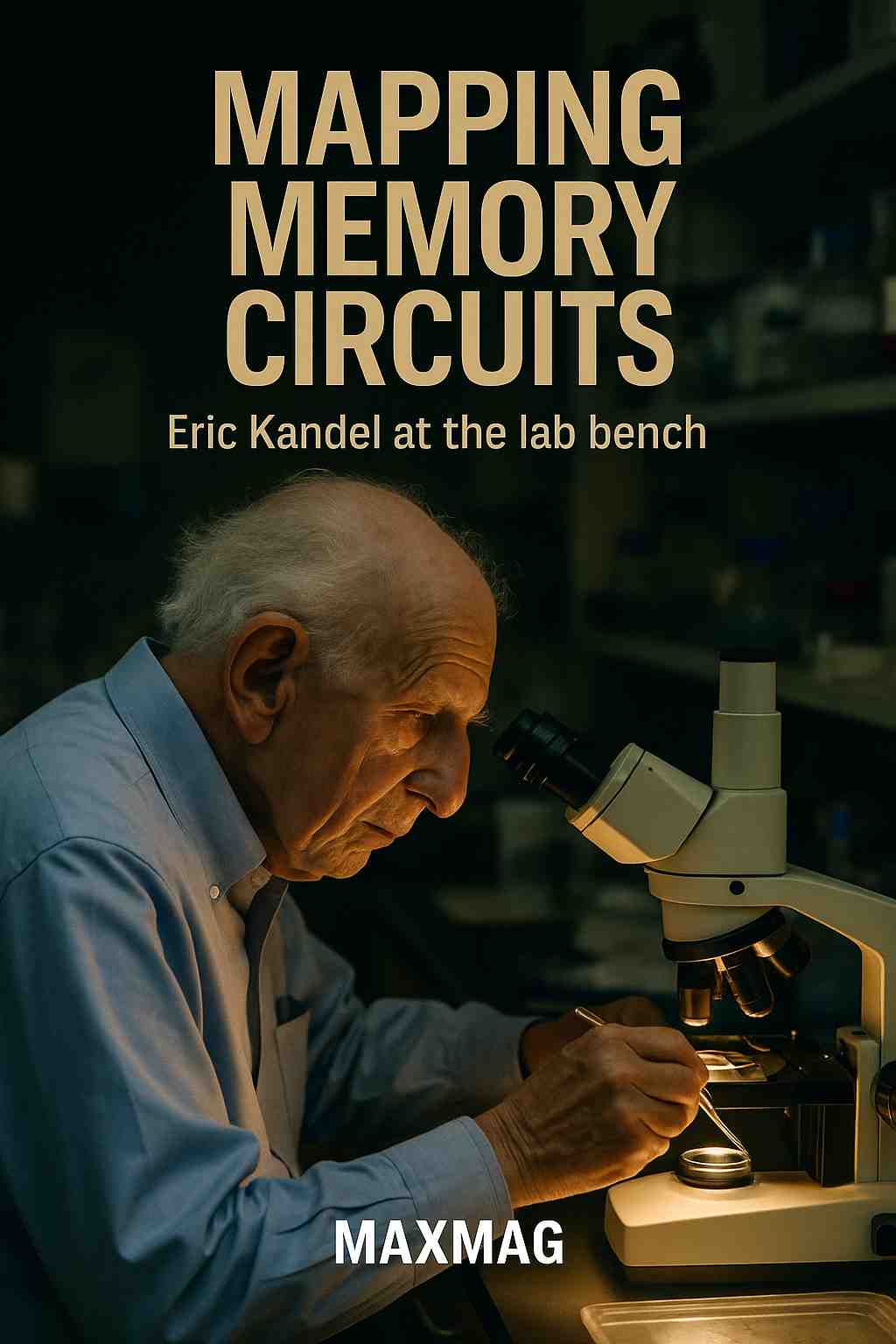
Personal Beliefs, Character and Private Life
Memory, trauma and Jewish identity
One cannot tell an honest Eric Kandel biography without confronting the Holocaust. Kandel has spoken and written movingly about the moment his non-Jewish classmates, overnight, stopped talking to him after Hitler entered Vienna; he has returned to the city, as an elder statesman of science, to discuss memory and responsibility.
His Jewish identity, shaped by both loss and survival, informs his view of memory as a moral as well as biological phenomenon. Remembering, for Kandel, is not just something neurons do; it is something societies must do to avoid repeating atrocities. In this sense, his life illustrates how personal history can set the agenda for an entire research programme.
A marriage of science: Eric and Denise Kandel
In 1956, Kandel married Denise Bystryn, a French-born sociologist and future epidemiologist whose own childhood was marked by hiding from Nazi persecution in occupied France. Their partnership—personal and, eventually, scientific—became a defining feature of his private life. For decades they pursued separate careers, Denise revolutionising research on the “gateway” patterns of drug use, Eric decoding synapses. Only later did they formally collaborate on studies exploring how nicotine and other substances affect brain circuits.
Colleagues often speak of Kandel’s warmth, humour and Old World charm. He is known for his bow ties, his delight in anecdotes, and his habit of breaking into Viennese songs at public events. Yet those who have worked closely with him also describe a steely resolve, a determination forged in exile and sharpened by decades at the cutting edge of competitive science.
Later Years and Final Chapter of Eric Kandel
Honours, institutions and ongoing influence
By the time he formally retired from some of his roles in the 2010s and early 2020s, Kandel had become an institution in his own right. He served for decades as a Howard Hughes Medical Institute investigator, founded Columbia’s Center for Neurobiology and Behavior, and helped create the university’s modern Department of Neuroscience. Even after stepping back from day-to-day lab work, he continued to write, lecture and advise, remaining a visible figure at scientific meetings and in public debates about psychiatry and brain research.
In his later writings, Kandel has increasingly reflected on ageing, dementia and the fragility of memory. Having built a career on the mechanisms that stabilise memories, he is acutely aware of the diseases—Alzheimer’s, other neurodegenerative syndromes—that can strip them away. The Eric Kandel biography thus comes full circle: from a boy traumatised by persecution to an elder scientist warning that societies must invest in understanding and preventing the loss of memory at every level.
The Lasting Legacy of Eric Kandel biography for neuroscience
A new template for mind–brain science
What, in the end, makes this Eric Kandel biography stand out in the long shelf of scientific lives? Part of the answer lies in his discoveries about synaptic plasticity—the detailed mapping of how experiences change neurons and how those changes underpin learning and memory. But part lies in the way he crafted a model for modern neuroscience itself: relentlessly empirical yet philosophically serious, open to insights from psychoanalysis, art and history.
By showing that you could move from the gill-withdrawal reflex of a sea slug to the emotional landscape of human trauma without abandoning scientific rigour, Kandel helped redefine what it means to study the mind. His work links the smallest units of biology to the broadest questions of identity, responsibility and healing. For anyone interested in how a life story can reshape an entire field, the Eric Kandel biography is not just a tale of prizes and publications; it is a reminder that science, at its best, grows from the deepest parts of human experience.
Frequently Asked Questions about Eric Kandel biography
Q1: Who is Eric Kandel and why is he important in neuroscience?
Q2: What are the main scientific contributions highlighted in the Eric Kandel biography?
Q3: How did Eric Kandel’s early life in Vienna influence his work on memory?
Q4: Why did Eric Kandel choose to study a sea slug instead of the human brain directly?
Q5: How does Eric Kandel connect neuroscience with psychoanalysis and the humanities?
Q6: What books should I read to learn more about Eric Kandel’s life and ideas?


